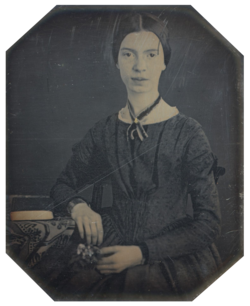Portal:Literature
Introduction

Literature is any collection of written work, but it is also used more narrowly for writings specifically considered to be an art form, especially novels, plays, and poems. It includes both print and digital writing. In recent centuries, the definition has expanded to include oral literature, much of which has been transcribed. Literature is a method of recording, preserving, and transmitting knowledge and entertainment. It can also have a social, psychological, spiritual, or political role.
Literary criticism is one of the oldest academic disciplines, and is concerned with the literary merit or intellectual significance of specific texts. The study of books and other texts as artifacts or traditions is instead encompassed by textual criticism or the history of the book. "Literature", as an art form, is sometimes used synonymously with literary fiction, fiction written with the goal of artistic merit, but can also include works in various non-fiction genres, such as biography, diaries, memoirs, letters, and essays. Within this broader definition, literature includes non-fictional books, articles, or other written information on a particular subject. (Full article...)
General images -
La Peau de chagrin (The Magic Skin or The Wild Ass's Skin) is an 1831 novel by French novelist and playwright Honoré de Balzac (1799–1850). Set in early 19th-century Paris, it tells the story of a young man who finds a magic piece of shagreen that fulfills his every desire. For each wish granted, however, the skin shrinks and consumes a portion of his physical energy. La Peau de chagrin belongs to the Études philosophiques group of Balzac's sequence of novels, La Comédie humaine.
Although the novel uses fantastic elements, its main focus is a realistic portrayal of the excesses of bourgeois materialism. Balzac's renowned attention to detail is used to describe a gambling house, an antique shop, a royal banquet, and other locales. He also includes details from his own life as a struggling writer, placing the main character in a home similar to the one he occupied at the start of his literary career. The central theme of La Peau de chagrin is the conflict between desire and longevity. The magic skin represents the owner's life-force, which is depleted through every expression of will, especially when it is employed for the acquisition of power. Ignoring a caution from the shopkeeper who offers him the skin, the protagonist greedily surrounds himself with wealth, only to find himself miserable and decrepit at the story's end.
Selected excerpt
| “ | Away with your fictions of flimsy romance, Those tissues of falsehood which Folly has wove; Give me the mild beam of the soul-breathing glance, Or the rapture which dwells on the first kiss of love. |
” |
| — Lord Byron, "The First Kiss of Love" | ||
More Did you know
- ... that Samuel Minturn Peck was the first Poet Laureate of Alabama, a title created for him, from 1930 until his death in 1938?
- ... that James McBride was described as "clearly stunned" when his novel The Good Lord Bird won the National Book Award for Fiction?
- ... that Arishima Ikuma, Japanese novelist, published his new-style poems and short stories as a vehicle to introduce the works of the French impressionist painter Paul Cézanne to the Japanese public?
- ... that German-born Jewish Egyptologist Käte Bosse-Griffiths published a novel in the Welsh language?
- ... that John Fowles' postmodern novel The French Lieutenant's Woman both emulated and parodied popular Victorian novels, like those of Charles Dickens and Thomas Hardy?
Selected illustration
Did you know (auto-generated) -

- ... that literary critic Qian Xingcun brought several Communist writers into the Shanghai film industry?
- ... that the literary magazine Adabijoti Soveti was the sole remaining publication in the Jewish-Bukharian language by the time of the switch to the Cyrillic script in 1939–1940?
- ... that The Inland Whale, by Theodora Kroeber, sought to demonstrate the literary merit of Indigenous American oral traditions?
- ... that Imagining Mars: A Literary History "presents a compelling case that 'Mars matters'"?
- ... that despite a career writing queer literature, Chen Xue's 2019 novel Fatherless City had a "putatively straight premise"?
- ... that scholar Mohja Kahf stated that there is no Syrian literature?
Today in literature
- 1773 - John Hawkesworth, English writer died
- 1839 - Louis-Honoré Fréchette, French Canadian poet born
- 1880 - Alexander Blok, Russian poet born
- 1889 - George S. Kaufman, American playwright born
- 1892 - Guo Moruo, Chinese writer born
- 1906 - Henri Charrière, author of Papillon born
- 1922 - José Saramago, Portuguese writer born
- 1930 - Chinua Achebe, Nigerian author born
- 1946 - Terrence McKenna, American writer born
- 1952 - Robin McKinley, American writer born
- 1954 - Andrea Barrett, American writer born
- 1967 - Craig Arnold, American poet born
- 1973 - Alan Watts, English writer died
- 1976 - Danny Wallace, British author born
- 1995 - Jack Finney, American author died
Topics
| Literature: | History of literature · History of the book · Literary criticism · Literary theory · Publishing |
| By genre: | Biography · Comedy · Drama · Epic · Erotic · Fable · Fantasy · Historical fiction · Horror · Mystery · Narrative nonfiction · Nonsense · Lyric · Mythopoeia · Poetry · Romance · Satire · Science fiction · Tragedy · Tragicomedy · more... |
| By region: | African literature · Asian · European · Latin American · North American · Oceanic |
| By era: | Ancient literature · Early medieval · Medieval · Renaissance · Early Modern · Modern |
| By century: | 10th century in literature · 11th · 12th · 13th · 14th · 15th · 16th · 17th · 18th · 19th · 20th · 21st |
| Recent: | 2018 in literature· 2017 · 2016 · 2015 · 2014 · 2013 · 2012 · 2011 · 2010 · 2009 · 2008 · 2007 · more... |
Categories
Related portals
| Concepts: | |
| Genres: | |
| Religions: |
Things you can do
Related WikiProjects
WikiProjects related to literature:
| Concepts: | Biographies · Books · Comics · Magazines · Manga · Novels · Poetry · Short stories · Translation studies |
| Genres: | Alternate history · Children's literature · Crime · Fantasy · Horror · Mythology · Romance · Science fiction |
| Authors: | Honoré de Balzac · Roald Dahl · William Shakespeare |
| Series: | Artemis Fowl · Chronicles of Narnia · Discworld · Harry Potter · His Dark Materials · Hitchhiker's Guide to the Galaxy · Inheritance Cycle · James Bond · King Arthur · Middle-earth · Percy Jackson · Redwall · A Series of Unfortunate Events · Shannara · Sherlock Holmes · A Song of Ice and Fire · Star Wars · Sword of Truth · Twilight · Warriors · Water Margin · Wizard of Oz |
| Regions: | Australian literature · Indian literature · Persian literature |
Associated Wikimedia
The following Wikimedia Foundation sister projects provide more on this subject:
-
Commons
Free media repository -
Wikibooks
Free textbooks and manuals -
Wikidata
Free knowledge base -
Wikinews
Free-content news -
Wikiquote
Collection of quotations -
Wikisource
Free-content library -
Wikiversity
Free learning tools -
Wiktionary
Dictionary and thesaurus




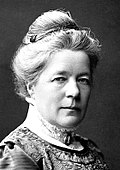












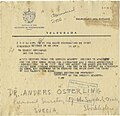













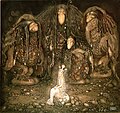



















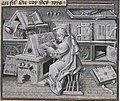




















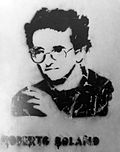


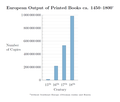








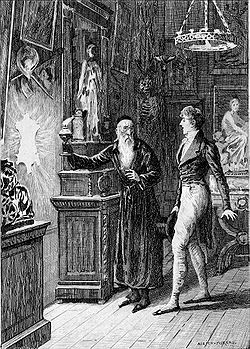
![Image 1 17th-century depiction of Murasaki by Tosa Mitsuoki Murasaki Shikibu (紫式部; [mɯ.ɾa.sa.kʲi ɕi̥.kiꜜ.bɯ, -ɕi̥ꜜ.kʲi-], c. 973 – c. 1014 or 1025), or Shijo (紫女; [ɕiꜜ.(d)ʑo], lit. 'Lady Murasaki'), was a Japanese novelist, poet and lady-in-waiting at the Imperial court in the Heian period. She was best known as the author of The Tale of Genji, widely considered to be one of the world's first novels, written in Japanese between about 1000 and 1012. Murasaki Shikibu is a descriptive name; her personal name is unknown, but she may have been Fujiwara no Kaoruko (藤原香子), who was mentioned in a 1007 court diary as an imperial lady-in-waiting. Heian women were traditionally excluded from learning Chinese, the written language of government, but Murasaki, raised in her erudite father's household, showed a precocious aptitude for the Chinese classics and managed to acquire fluency. She married in her mid-to-late twenties and gave birth to a daughter, Daini no Sanmi. Her husband died after two years of marriage. It is uncertain when she began to write The Tale of Genji, but it was probably while she was married or shortly after she was widowed. In about 1005, she was invited to serve as a lady-in-waiting to Empress Shōshi at the Imperial court by Fujiwara no Michinaga, probably because of her reputation as a writer. She continued to write during her service, adding scenes from court life to her work. After five or six years, she left court and retired with Shōshi to the Lake Biwa region. Scholars differ on the year of her death; although most agree on 1014, others have suggested she was alive in 1025. (Full article...)](http://upload.wikimedia.org/wikipedia/en/d/d2/Blank.png)


